Why Narendra Modi hugs the headlines
- Published
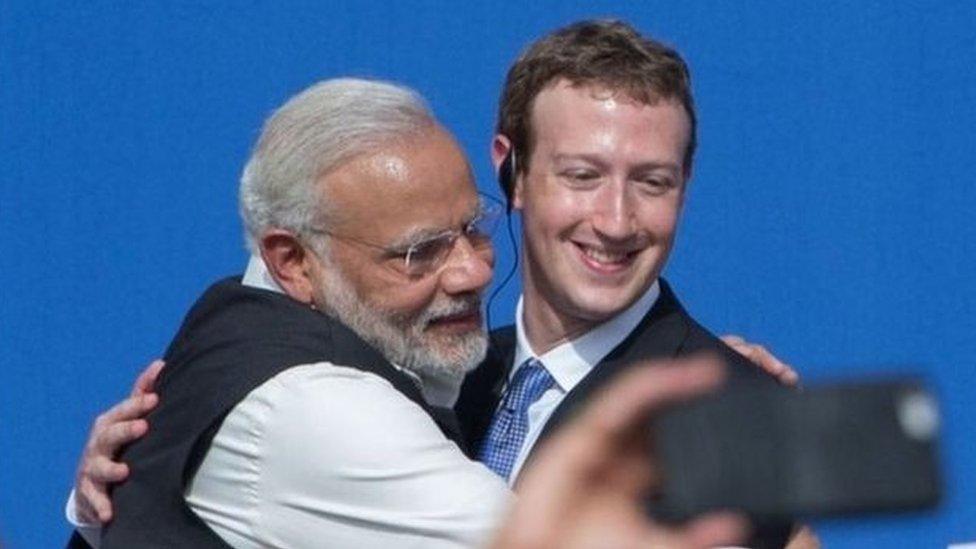
Mr Modi hugged Mr Zuckerberg at Facebook's headquarters
Narendra Modi is the most physically demonstrative Indian leader in years.
During his visit to the US, he enveloped Facebook boss Mark Zuckerberg in a massive hug and reprised the embrace with President Barack Obama in New York. In August, he hugged the crown prince of Abu Dhabi Sheikh Mohammed bin Zayed al-Nahyan, inspiring some droll memes., external
Mr Modi has also hugged Japanese Prime Minister Shinzo Abe and the former Australian Prime Minister Tony Abbott. The mother of all hugs came in January with a humongous embrace of President Obama. Delirious Indian news channels ran tickers screaming 'Modi/Obama hug' because, as The New York Times reported, "this was not expected". The newspaper dubbed the development as a "quadrilateral security hug"., external
Not demonstrative
Whatever the case, Mr Modi has learned to stop worrying about public displays of affection when he meets the rich and the powerful: Google "Modi hugging", and it spits out more than 300,000 results in under a second.
Indians and their politicians are not known for being so touchy-feely. Cuban leader Fidel Castro scandalised many Indians when he gave former prime minister Indira Gandhi a huge hug during a summit in Delhi in 1983. Mrs Gandhi, wrote a biographer Pranay Gupte, "never an emotionally demonstrative person, visibly recoiled from the hug, managing only a faintly polite smile in the interest of diplomatic niceties".
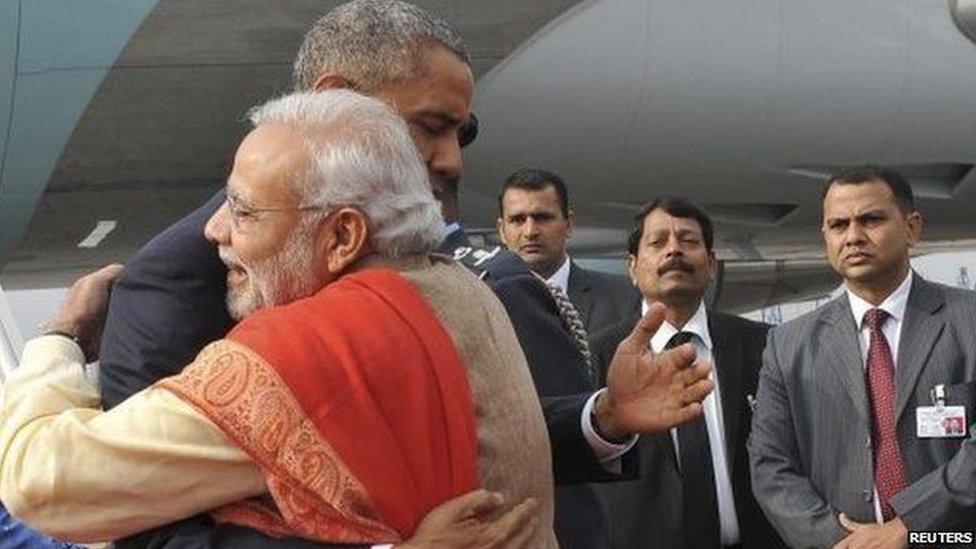
Mr Modi gave Mr Obama the "mother of all hugs" when he received him in Delhi in January
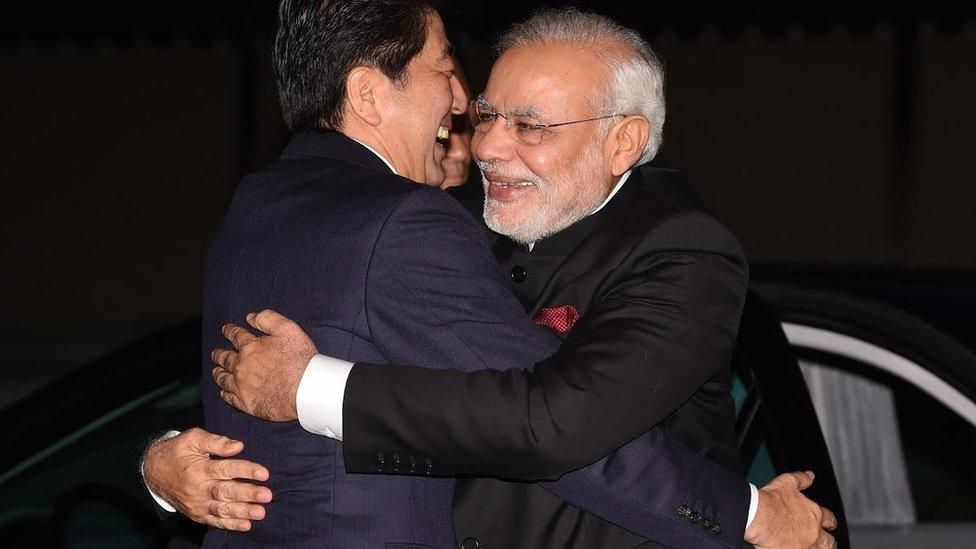
Mr Modi hugging Shinzo Abe

Mr Modi with the Crown Prince of UAE Sheikh Mohammed bin Zayed Al Nahyan
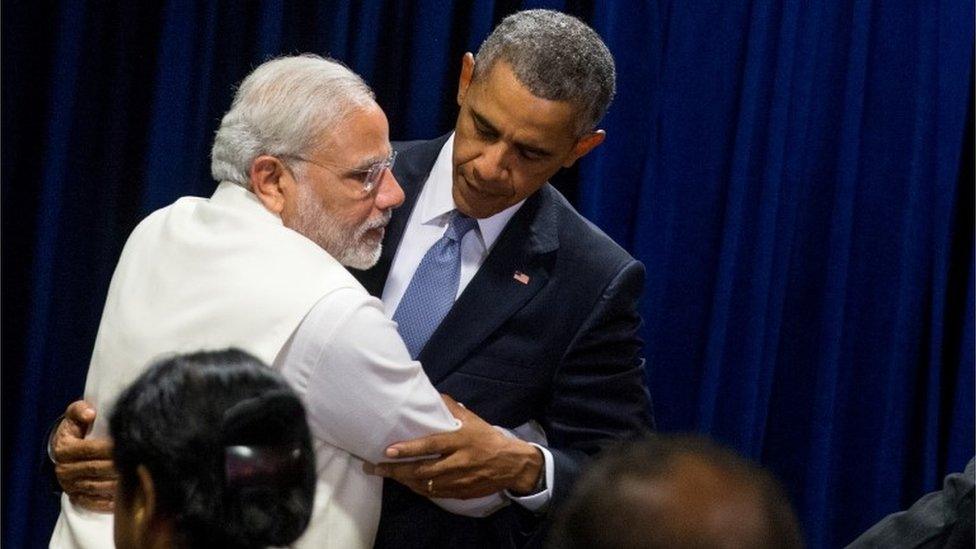
Another hug for Mr Obama, on the Indian PM's recent trip to the US
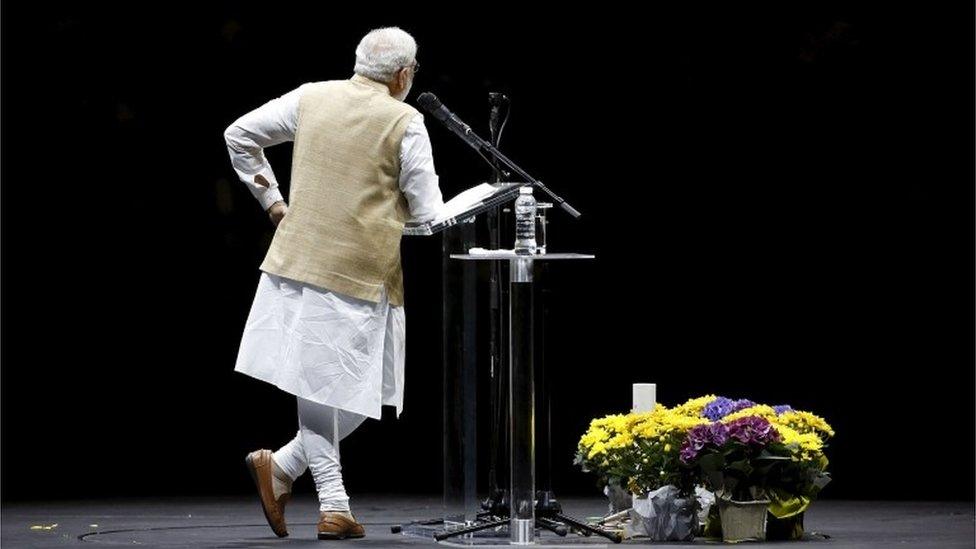
Mr Modi's body language caters to different audiences, say commentators
Even Mr Modi was different in his early days as a party functionary in Delhi. Biographer Nilanjan Mukhopadhyay remembers him as a "warm and affectionate man and his overall body language touched a chord". Much later, as the chief minister of Gujarat, he could be a "bit cold and remote" with his peers at meetings, "shaking hands and maybe touching somebody on his shoulders if he knew somebody particularly well".
"But this is different, this hugging spree. He was never so overt and aggressive in his public display of affection," says Mr Mukhopadhyay. "His bear hugs are to convey the message that he's the representative of more than a billion Indians. He's saying 'I have demographic clout'.
"And he's sending the message back home that 'I am being respected around the world, so respect me at home and give me your votes'. It's a powerful piece of imagery."
People see before they hear, and a leader's body language is a vital asset. The ritual of shaking hands is all about restraint and respect. Hugs go beyond the formal protocol - they show affection, comradeship and spontaneity. Mr Modi, clearly, believes that hugs fetch more dividends; they are not about cuddly politics alone.
The body language is also tweaked to cater to different audiences. Sociologist Shiv Visvanathan says Mr Modi has three core audiences: the diaspora, foreign leaders and the Indian people.
"To the Indian masses, he speaks from a great distance. To the diaspora, he speaks with a sense of conviviality. To the world leaders, he changes his body language, gives them big hugs," says Dr Visvanathan.
"The effort is too obvious. He's trying to tell the world that he's an equal, a friend and he's very affectionate. Mr Modi is a performer. At the same time, he has become a caricature of himself. This worries me. I would like my leader to have more confidence."